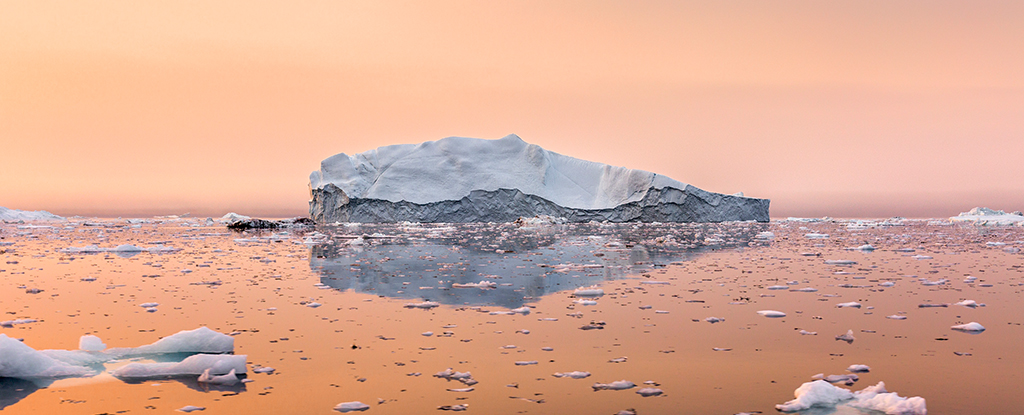Products You May Like
Second only to Antarctica’s frozen cap in size, Greenland’s ice sheet is several million cubic kilometers of fresh water held in check by a combination of rock and sub-zero temperatures.
Until the late 20th century, odds were the amount of ice lost to the sea would be replaced by a dusting of precipitation. Today there’s a 99 percent chance of more water going into the Atlantic than falling on land.
Just what determines Greenland’s annual ice budget depends on numerous geological and meteorological features, many of which scientists are still vague on. Now an international team of researchers has fine-tuned their estimates on factors that hold the island’s enormous reservoir of frozen water at bay.
Based on an analysis of the sheet’s fluctuations between 2000 and 2019, we can expect to lose a little over 3 percent of the existing ice, even if the climate were to stabilize.
To put that into perspective, we’re talking enough water being dumped into the oceans to force a rise of around 27.4 centimeters, or nearly a foot. That’s if the future climate was to loop through the past decade of temperatures and rainfall over and over again.
If the worst year in the past two decades were to become representative of Greenland’s water cycle, the commitment of ice loss could cause sea levels to creep up by around 78.2 centimeters (over 2.5 ft).
Being optimistic, more of the good years could even see a return to ice growth.
Based on Greenland’s history of ice loss and accumulation, these could be seen as long-term predictions based on cycles that take place over thousands of years.
Unfortunately we live in unprecedented times. While the new model doesn’t tell us precisely what kind of time-scale this transaction might occur on, the researchers suggest we could be looking at a window of maybe one or two centuries given what we know about our world today.
As for tomorrow? Just what our world will look like in coming years depends a lot on how we act now, of course.
But short of a spontaneous ice age occurring, Greenland is locked into a debt of slowly melting ice for the foreseeable future.
Key to the new method for understanding the equilibrium of ice accumulation and melting – what is known as surface mass balance – is to focus on changes in the geometry of the ice within a set climate.
The rate at which glaciers flow into the sea is constrained by the volume of ice pressing down over a certain area. By also taking into account the way Greenland’s glaciers break up around its coastline, it’s possible to calculate a committed loss of ice that’s already being squeezed into the Atlantic under its own pressure.
At some point the steady slide of glacial ice and meltwater might once again balance the weight of snow accumulating on Greenland’s peaks and plateaus.
Precisely what that point is will depend on whether we have more years like 2018 – with a relatively low amount of ice loss – or horror years like 2012, where there were days that 97 percent of the ice sheet showed signs of surface melting.
In that worst-case scenario, a much larger fraction of Greenland’s ice will end up in the drink, with glaciers trickling away at speeds precipitation just can’t match.
Were that to occur, it’s not just sea-level rise we’d need to worry about. Such a volume of fresh water being dumped into the north Atlantic would float on top of the denser salt water, effectively putting the brakes on a major ocean current that helps cool the planet’s equator.
Every fraction of a degree of temperature rise brings us closer to that grim possibility. Under a so-called ‘business as usual’ scenario, where regulations fail to mitigate growing emissions, we might expect Greenland to be far less frozen by the year 2200.
It’s a fate we can avoid. While a cut of Greenland’s ice is destined to vanish, it’s still in our power to keep its glaciers flowing for a long time to come.
This research was published in Nature Climate Change.
